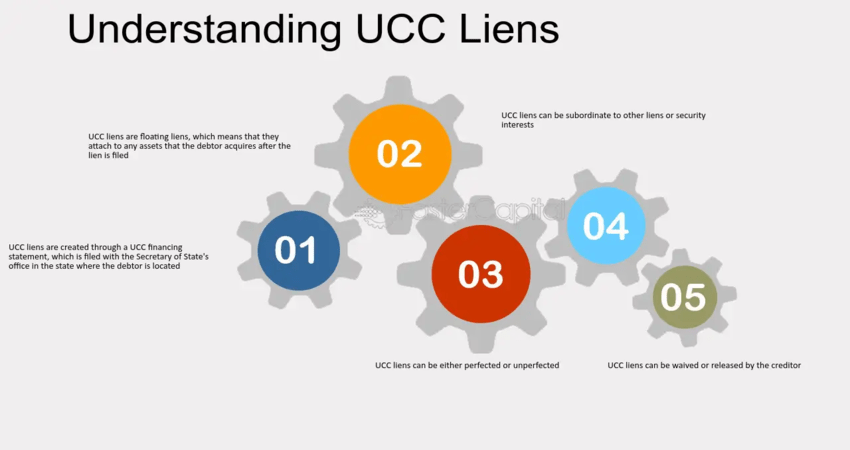Welcome to the world of personal loans, a financial tool that many individuals use to navigate life’s various expenses and opportunities. In this guide, we’ll delve into the realm of personal loans tailored for the unique landscape here. Whether you’re dreaming of a tropical getaway, planning home improvements, or tackling unexpected bills, understanding personal loans can empower you to make informed financial decisions.
This guide aims to demystify the often intricate landscape of personal loans in our context. We’ll cover the types of personal loans available, and the eligibility criteria, and walk you through the application process. By the end, you’ll have a clearer picture of how personal loans can be a practical solution for achieving your goals and managing your financial responsibilities. So, let’s embark on this journey together, exploring the avenues that can turn your aspirations into reality.
Types of Personal Loans in Australia
As you navigate the diverse landscape of personal loans in our financial setting, it’s essential to understand the varied options available.
- Secured Personal Loans:
- Involves pledging collateral (e.g., car or property).
- Assures lenders.
- Favored by those with valuable assets seeking financial assistance.
- Unsecured Personal Loans:
- Collateral-free, catering to individuals without substantial assets.
- Priorities accessibility, making it suitable for a broader range of borrowers, including people with low credit scores.
- Fixed-Rate Loans:
- Offers a steady sail with a fixed interest rate throughout the loan term.
- Simplifies budgeting by ensuring predictable monthly repayments.
- Variable-Rate Loans:
- Adds unpredictability with fluctuating interest rates.
- Provides potential for reduced interest costs if market rates favourably change.
- Debt Consolidation Loans:
- A practical solution for streamlining the financial landscape.
- Involves consolidating multiple debts into a single, more manageable loan.
- Simplifies the repayment structure for a more straightforward financial journey.
Eligibility Criteria for Personal Loans
General Eligibility Requirements
- Age: Lenders typically require applicants to be between 18 and 65 years old, ensuring a legal and economically active age group.
- Residency: A stable residential address is crucial, providing a sense of permanence and reliability to lenders.
- Income: A regular and verifiable source of income is essential for loan approval, demonstrating the ability to meet repayment obligations.
Credit Score Considerations
- Credit Score Significance: Your credit score is like a financial report card, reflecting your creditworthiness based on past financial behaviour. Typically, these scores reflect an individual’s creditworthiness.
- Loan Approval Impact: A higher credit score increases the likelihood of loan approval and often results in more favourable terms, such as lower interest rates.
- Options for Varied Credit Histories: Even if your credit score is less than perfect, some lenders offer tailored solutions for individuals with lower scores, though these may come with higher interest rates.
Employment and Income Verification
- Stable Employment History: Lenders favour applicants with a consistent employment history, assuring a reliable income stream.
- Income Verification: During the application process, proof of income—such as pay stubs or tax returns—is required, ensuring that applicants have the means to comfortably meet repayment obligations.
- Self-Employed Considerations: If you’re self-employed, additional documentation, such as business financial statements, may be necessary to provide a comprehensive view of your financial situation.
Meeting the eligibility criteria for personal loans involves a mix of age, residency, and income stability. Credit scores play a pivotal role in determining loan terms, and a stable employment history, coupled with income verification, reinforces your ability to manage repayments. Being transparent and prepared during the application process increases the chances of securing a personal loan aligned with your financial needs.
Preparing to Apply for a Personal Loan
Before diving into a personal loan application, take a moment to evaluate your financial health. This step is crucial in ensuring you’re well-prepared and that the loan aligns with your overall financial goals.
- Budget Review
- Assess your monthly income and expenses.
- Identify the areas where you can cut back or save.
- Debt Evaluation
- Understand your existing debts and their repayment status.
- Consider how a new loan will fit into your overall debt picture.
- Emergency Fund Check
- Ensure you have a financial cushion for the unexpected expenses.
- A robust emergency fund can enhance your financial security.
- Credit Report Review
- Obtain a copy of your credit report to identify any discrepancies.
- Address any issues that might affect your creditworthiness.
Determining the Loan Amount
Understanding how much you need and can comfortably repay is crucial in making informed borrowing decisions.
- Identify Specific Needs
- Pinpoint the purpose of the loan, whether it’s for home improvements, debt consolidation, or a major purchase.
- Consider Affordability
- Evaluate your monthly budget to determine how much you can comfortably allocate to loan repayments.
- Be realistic about your ability to manage the repayments within your current financial framework.
- Factor in Additional Costs
- Account for any associated fees, such as origination fees or insurance costs.
- Ensure the loan amount covers both your primary need and these additional expenses.
Document Preparation
- Proof of Identity
- Provide a valid driver’s license, and passport, or other government-issued ID.
- Proof of Income
- Include recent pay stubs, tax returns, or bank statements to verify your income.
- Employment Verification
- Offer confirmation of stable employment, including contact details for your employer.
- Residential Proof
- Present documents like utility bills or a lease agreement to confirm your residential address.
- Existing Debt Information
- Disclose details of any existing loans or debts you’re currently managing.
- Credit Report
- Although lenders typically access this themselves, having a personal copy can be useful for transparency and addressing potential concerns.
By thoroughly assessing your financial situation, determining the appropriate loan amount, and organising the required documents, you position yourself for a smoother personal loan application process. This thoughtful preparation enhances your chances of securing a loan that not only meets your needs but also aligns with your financial well-being.
The Application Process
Step-by-Step Application Guide
- Research Lenders
- Explore reputable lenders and compare their offerings.
- Consider interest rates, fees, and customer reviews.
- Online or In-Person Application
- Choose between online applications or in-person visits based on your preference.
- Online applications often provide convenience and quick responses.
- Provide Personal Information
- Fill in personal details, including name, address, contact information, and identification documents.
- Income and Employment Information
- Input details about your income, employment history, and stability.
- Be accurate and transparent to facilitate the verification process.
- Loan Amount and Purpose
- Specify the desired loan amount and the purpose, such as debt consolidation or home improvements.
- Communicate your borrowing needs.
- Credit Check
- Lenders will conduct a credit check to assess your credit worthiness.
- Be prepared for this standard procedure and understand its impact.
- Review Application Before Submission
- Double-check all entered information for accuracy.
- Ensure you haven’t missed any required fields.
Understanding Loan Terms and Conditions
- Interest Rates
- Comprehend the interest rates offered and whether they are fixed or variable.
- Understand how the rate may impact your monthly repayments.
- Repayment Schedule
- Review the proposed repayment schedule.
- Clarify if payments are monthly, bi-monthly, or as per another arrangement.
- Fees and Charges
- Be aware of any upfront fees, origination fees, or penalties for early repayment.
- Understanding these costs helps in evaluating the overall affordability.
- Loan Duration
- Know the duration of the loan term.
- Consider how the length of the loan impacts the total repayment amount.
Application Submission and Approval Process
- Confirmation and Verification
- After submitting your application, expect a confirmation from the lender.
- Lenders will verify the provided information, including your credit history and income.
- Additional Documentation (if needed)
- Be prepared to submit any additional documents requested by the lender.
- Timely submission expedites the approval process.
- Loan Approval or Denial
- Receive notification of loan approval or denial.
- If approved, carefully review the final terms before accepting.
- Loan Disbursement
- Once accepted, the funds are disbursed.
- Understand how and when you will receive the loan amount.
- Repayment Commencement
- Know when the first repayment is due and the preferred method of payment.
- Set up automatic payments if available for convenience.
By following this step-by-step guide, understanding the terms and conditions, and being aware of the application submission and approval process, you can navigate the personal loan application journey with confidence. Taking the time to comprehend the details ensures that the loan you secure aligns with your financial goals and capabilities.
After Loan Approval
Loan Disbursement
- Notification of Approval
- Once your loan is approved, you’ll receive official notification from the lender.
- This communication often includes details about the approved loan amount, interest rate, and repayment terms.
- Disbursement Methods
- Funds are typically disbursed directly to your nominated bank account.
- Confirm the disbursement method with the lender and ensure your account details are accurate.
- Timeframe for Disbursement
- Disbursement timelines vary but are often within a few business days.
- Be aware of the specific timeframe outlined by your lender for when the funds will be available.
Note: Some lenders offer a quicker process for people who are in need of quick cash. Instant cash loans can provide the funds within an hour or sometimes less depending on the lender and your bank.
Managing Repayments
- Payment Schedule Awareness
- Familiarise yourself with the repayment schedule outlined in the loan agreement.
- Note the due dates and the preferred payment method.
- Automatic Payments
- Opt for automatic payments if offered by the lender.
- This ensures timely repayments and minimises the risk of late fees.
- Budgeting for Repayments
- Integrate loan repayments into your monthly budget.
- Ensure that you have sufficient funds available to cover each instalment.
- Additional Payments and Early Repayment
- Check if there are penalties for early repayment.
- If possible, consider making additional payments to reduce the overall interest paid.
Dealing with Potential Issues
- Late Payments
- Communicate proactively with the lender if you anticipate a late payment.
- Some lenders offer flexibility and may provide options to adjust the repayment schedule.
- Financial Hardship
- If facing financial hardship, contact the lender immediately.
- Lenders often have hardship provisions, which may include temporary payment reductions or deferments.
- Communication is Key
- Open and honest communication is crucial.
- Inform the lender about any changes in your financial situation promptly.
- Seeking Professional Advice
- If financial challenges persist, consider seeking advice from financial counsellors.
- They can guide managing debt and navigating challenging financial circumstances.
Remember, lenders are often willing to work with borrowers facing difficulties, but communication is essential. It’s in the best interest of both parties to find a solution that ensures you can manage your repayments while meeting your financial obligations. By staying informed and proactive, you can navigate the post-approval phase of your loan with confidence and financial well-being.
Comparing Personal Loan Offers
Factors to Consider
- Interest Rates
- Compare the interest rates offered by different lenders.
- Understand whether the rates are fixed or variable and how they may impact your overall repayment.
- Fees and Charges
- Scrutinise the fine print for any additional fees, such as origination fees or early repayment penalties.
- Consider the total cost of the loan, including these fees, to make an informed decision.
- Loan Terms
- Evaluate the duration of the loan.
- Longer terms may have lower monthly payments but could result in higher overall interest payments.
- Repayment Flexibility
- Assess the flexibility offered in repayment schedules.
- Some lenders may allow adjustments or provide grace periods in case of financial challenges.
- Lender Reputation
- Research the reputation of each lender.
- Online reviews and testimonials can offer insights into the experiences of other borrowers.
Using Comparison Tools
- Online Loan Comparison Websites
- Utilise online platforms that allow you to compare multiple loan offers side by side.
- These websites often provide a comprehensive overview of interest rates, fees, and terms.
- Financial Comparison Apps
- Explore financial apps that aggregate loan offers based on your preferences.
- These apps can simplify the comparison process by presenting key information in an easy-to-understand format.
- Bank and Lender Websites
- Visit the official websites of different banks and lenders.
- Most institutions provide tools or calculators to estimate loan costs, helping you make an informed decision.
- Government Comparison Tools
- In some countries, government websites offer tools to compare financial products.
- These tools may provide information on interest rates, fees, and terms.
- Consult with Financial Advisors
- Seek advice from financial advisors who can guide you through the comparison process.
- Their expertise can help you navigate the intricacies of different loan offers.
Tips for Effective Comparison
- Standardise Your Comparison
- Use consistent criteria when comparing loans, such as loan amount and duration.
- This ensures a fair assessment of each offer.
- Consider Your Financial Goals
- Align loan features with your financial goals.
- For example, if rapid repayment is a priority, focus on offers with favourable early repayment terms.
- Look Beyond Interest Rates
- While interest rates are crucial, consider the overall cost of the loan, including fees.
- A lower interest rate may be offset by high fees.
- Read the Fine Print
- You can read the Carefully terms and conditions of each loan offer.
- Pay attention to any clauses that may impact your repayment or incur additional costs.
By weighing these factors and leveraging comparison tools, you can make a well-informed decision when selecting a personal loan. Taking the time to compare offers ensures that the loan you choose aligns with your financial goals and minimises the overall cost of borrowing.
Risks and Considerations
Potential Risks
- Accumulating Debt
- One of the primary risks is the potential to accumulate debt beyond your means.
- Borrowing more than necessary or choosing a loan with unfavorable terms can lead to financial strain.
- High-Interest Rates
- Personal loans often come with higher interest rates than other types of loans.
- Failure to manage these rates effectively can result in increased overall repayment amounts.
- Unforeseen Financial Challenges
- Unexpected life events, such as job loss or medical expenses, can impact your ability to repay the loan.
- Lack of preparation for unforeseen circumstances poses a risk to your financial stability.
- Impact on Credit Score
- Missing payments or defaulting on a loan can have a negative impact on your credit score.
- A lower credit score may limit your access to favorable credit in the future.
- Hidden Fees
- Some loans may come with hidden fees or penalties for early repayment.
- Failure to understand these terms can lead to unexpected financial burdens.
Responsible Borrowing Practices
- Borrow Only What You Need
- Determine the exact amount you need and resist the temptation to borrow more.
- Borrowing only what is necessary minimizes the risk of overextending yourself financially.
- Understand the Terms
- Thoroughly read and understand the terms and conditions of the loan.
- Be aware of interest rates, fees, and any potential penalties for early repayment.
- Create a Realistic Budget
- Develop a comprehensive budget that includes the new loan repayment.
- Ensure that your budget accounts for all living expenses and allows room for unforeseen events.
- Emergency Fund
- Maintain an emergency fund to cover unexpected expenses.
- Having a financial safety net can prevent reliance on additional borrowing during challenging times.
- Regularly Review Finances
- Periodically review your financial situation and adjust your budget as needed.
- Proactive financial management helps identify potential issues before they escalate.
- Explore Alternatives
- Consider alternative financing options, such as lower-interest credit or budget adjustments.
- Exhaust all possibilities before committing to a personal loan.
- Communicate with Lenders
- If facing financial challenges, communicate with your lender promptly.
- Many lenders offer assistance or modified repayment plans for borrowers experiencing difficulties.
Borrowing responsibly involves a careful assessment of your financial situation, a clear understanding of the terms, and proactive financial management. By being mindful of potential risks and adhering to responsible borrowing practices, you can leverage personal loans as a tool to meet financial goals without jeopardising your overall financial well-being.
Alternatives to Personal Loans
Other Credit Options
Credit Cards
Credit cards provide a revolving line of credit with varying interest rates. They are suitable for short-term expenses and offer flexibility in managing monthly repayments.
Pros:
- Flexibility: Credit cards allow you to make purchases and pay over time.
- Rewards Programs: Some credit cards offer rewards, cashback, or travel points.
- Emergency Use: Ideal for unexpected expenses or emergencies.
Cons:
- High-Interest Rates: Credit cards often have higher interest rates compared to personal loans.
- Credit Score Impact: Maxing out credit cards or missing payments can negatively impact your credit score.
Lines of Credit
A line of credit allows borrowers to access funds up to a predetermined limit. Interest is only charged on the amount used, offering flexibility similar to credit cards.
Pros:
- Flexibility: Similar to credit cards, lines of credit offer flexibility in borrowing.
- Lower Interest Rates: Generally lower interest rates compared to credit cards.
Cons:
- Variable Rates: Interest rates on lines of credit can be variable, making it challenging to predict future costs.
- Risk of Overspending: Easy access to credit may lead to overspending.
Secured Loans
They often come with lower interest rates but carry the risk of asset repossession if repayments are not met.
Pros:
- Lower Interest Rates: Secured loans often come with lower interest rates due to the collateral.
- Potential for Higher Loan Amounts: Collateral allows for larger loan amounts.
Cons:
- Risk of Asset Loss: If unable to repay, the collateral (e.g., car or property) may be seized.
- Application Process: Secured loans may have a more involved application process due to collateral evaluation.
Peer-to-Peer Lending
Peer-to-peer lending platforms connect borrowers with individual lenders. These platforms may offer competitive interest rates, depending on the borrower’s creditworthiness.
Pros:
- Competitive Rates: Depending on your creditworthiness, peer-to-peer loans may offer competitive interest rates.
- Diverse Borrowing Options: A range of loan amounts and terms may be available.
Cons:
- Risk of Higher Rates: If your credit is less than stellar, interest rates may be higher.
- Limited Regulation: Peer-to-peer lending platforms may have less regulatory oversight compared to traditional financial institutions.
Choosing the Right Option
- Consider Purpose: Match the credit option with the purpose of borrowing.
- Evaluate Interest Rates: Compare interest rates and consider the overall cost of borrowing.
- Assess Your Financial Situation: Choose an option that aligns with your financial stability and goals.
- Review Repayment Terms: Understand the repayment terms and potential impact on your budget.
Understanding the pros and cons of these alternatives helps you make an informed decision based on your financial needs and preferences. Each option has its own merits, and selecting the right one involves careful consideration of your unique circumstances.
Legal and Regulatory Framework
Australian Regulations on Personal Loans
- National Credit Act: The National Credit Act in Australia plays a pivotal role in regulating personal loans. Key protections under this act include responsible lending obligations, disclosure requirements, and protections for borrowers facing financial hardship.
- Consumer Credit Protection: The National Consumer Credit Protection Act and the National Credit Code provide a comprehensive framework for protecting consumers who borrow money in Australia.
- Consumer Protection Laws: Consumer protection laws, such as the Australian Consumer Law (ACL), offer additional safeguards. These laws generally reflect protections found in the ACL, covering issues like unjust contracts and unsuitable loans.
- Regulatory Bodies: The Australian Securities and Investments Commission (ASIC) and the Australian Competition and Consumer Commission (ACCC) play key roles in overseeing and enforcing regulations related to personal loans.
Consumer Rights and Protections
- Responsible Lending: Borrowers in Australia have the right to be treated fairly and ethically by lenders. Responsible lending practices ensure that loans are suitable for the borrower’s circumstances.
- Financial Hardship Protections: Borrowers facing financial difficulties have the right to seek variation in loan terms based on financial hardship. Lenders are obligated to consider and address these situations.
- Credit Reporting Rights: Borrowers have the right to access and correct their credit reports, ensuring fair representation of their credit history.
Conclusion
Navigating the landscape of personal loans in Australia involves understanding the diverse options available, meeting eligibility criteria, and thorough preparation for the application process. Types of personal loans, such as secured and unsecured options, offer flexibility tailored to individual needs.
The eligibility criteria, encompassing age, residency, income stability, and credit scores, serve as fundamental pillars in securing loan approval. Thorough financial assessments and document preparation before applying enhance the likelihood of a successful loan application. The subsequent steps, from application to post-approval management, require careful consideration of terms, transparent communication with lenders, and proactive financial planning.
Moreover, alternatives to personal loans, such as credit cards and secured loans, provide additional choices for borrowers. It is imperative to weigh the risks, adopt responsible borrowing practices, and understand the legal framework, including the National Credit Act and Consumer Protection Laws, to make informed decisions aligned with one’s financial goals.
Ultimately, choosing the right credit option and adhering to responsible financial practices empower individuals to utilize personal loans as effective tools for achieving their aspirations while safeguarding their overall financial well-being.
















